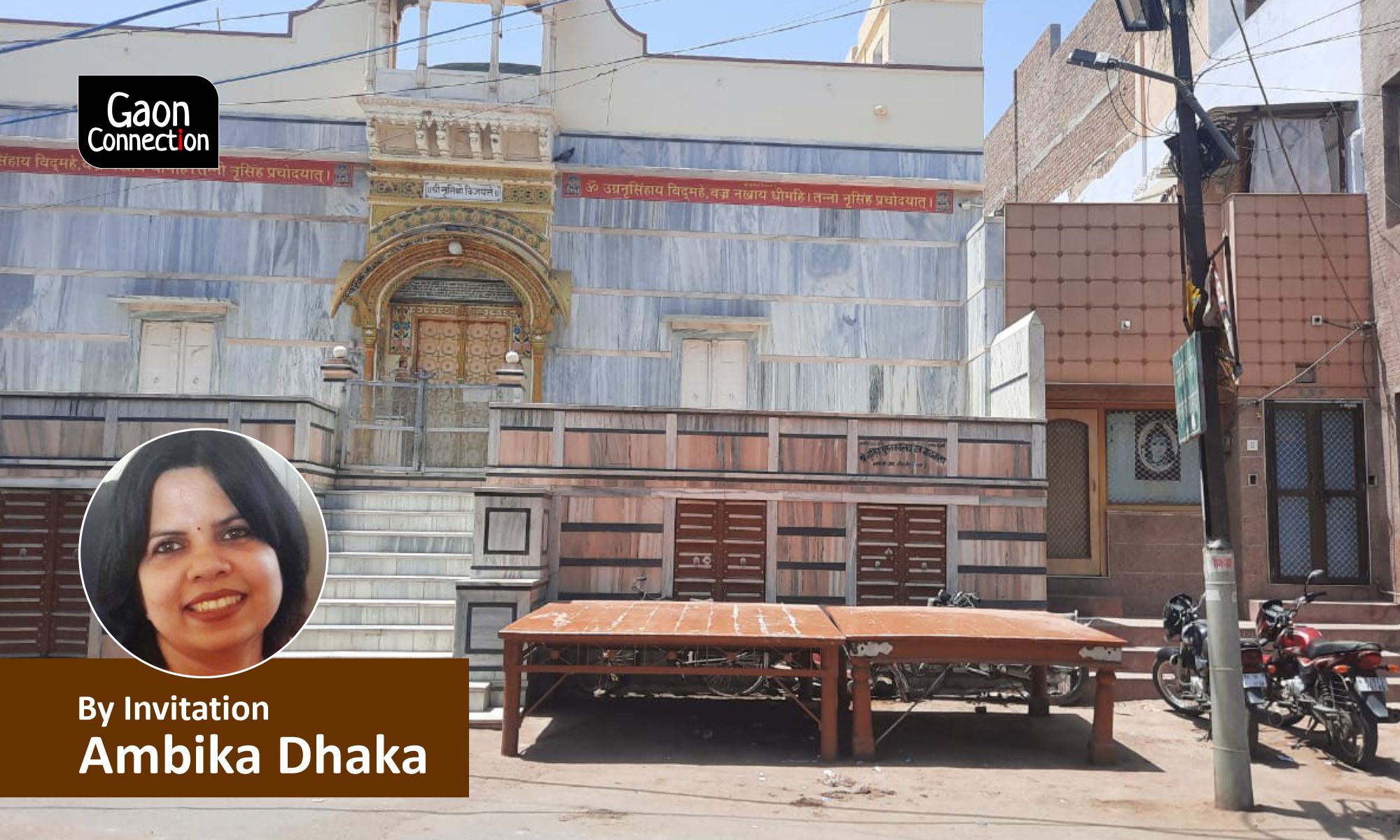Bikaner, Rajasthan
The patas lie unused now, in the deserted lanes of Bikaner because of the COVID-19 restrictions. But, they wait patiently for the time when old friends will gather again, sit on them and catch up.
Patas are where the Bikaneris gather to meet, greet and share their thoughts. In traditional societies, this space to congregate and confer, could be under the bargad ka ped (banyan tree), the courtyard or the village square. But in Bikaner, Rajasthan, it is the pata that fosters the spirit of a community space, encourages conversations, enables exchange of views and news.
The word Pãtã comes from the Hindi word Pãt which is the distance between the two banks of a river. Traditionally, patas are square wooden structures, usually four feet by four feet, big enough to hold many people, mostly men, who gather there in the evenings to sit and chat. They kick off their footwear, clamber on and get comfortable.
Houses are cheek-by-jowl in the narrow lanes of Bikaner, with large joint families occupying the limited space indoors. There are not too many parks and open spaces to go to. The patas that are set outdoors under the open skies give the men a chance to get out of the way of the women and young people indoors.
Wherever the patas are, there is a buzz of activity where on hot summer evenings, usually the menfolk sit outdoors, and spend hours laughing, gossiping and philosophising. And, the paan shops do brisk business as do the tea stalls, as conversations and reminiscences continue, sometimes all night long.
History of patas
The history of pata is as old as the city of Bikaner itself. Scholars believe that ever since Rao Bika laid the foundation of the city in 1488 A.D, the pata has been a defining feature of it. Significantly, Rao Bika’s royal throne was in the shape of pata.
There are archival references to the pata in some 18th century documents where it is mentioned that patas were made of stone. These squarish stone benches were a familiar sight in almost every locality. Then, wood and metal slowly replaced the stone. Iron frames were made with wooden slats.
Also Read: On Jur Sital, the Maithili New Year, the chulha maharani gets a break
In Bikaner, there are family owned patas, usually referred to as takht, bajaut, chauki, and the patas used and looked after by the public, referred to as pata, chauk, baithak, etc.
Patas are so intrinsically woven into the day to day life of the local culture of Bikaner that patasanskriti or the culture of pata is actually a word in their vocabulary. Other words derived from it are patagazette, a phrase coined to describe the discussions on the budget that took place on the pata! Patabazi is batting the breeze or just hanging around socialising, and patapari is light hearted banter, and so on.
Cultural significance of patas
The pata, besides being a place to gather socially, also serves other purposes. Whether it is a puja or a Hindu or Muslim wedding, it is the nodal point of the ceremonies. It acts as a platform to display wedding gifts and many rites and rituals are played out on it. People sit on them and sing songs, exchange jokes, debate, argue and dwell on contemporary affairs. The patas are like newsrooms where news is gathered and disseminated.
Also Read: Well, it is time for a well’s wedding. And the groom is … a banyan tree!
It is also interesting how the patas in different localities and areas keep alive distinctive linguistic traits with colloquial references and slang. Whether it is fairs, festivals or traditional rituals, patas hold a position of prominence and even elicit deference. Women cover their heads in respect when they pass by a pata. Because it is where their ancestors sat and discoursed.
Patas on the decline
While in 1947, at the time of Independence, there were 120 patas in Bikaner, there are today around 93. Seventy per cent of them are looked after by the panchayats, like the pata of Daga panchayat, while 20 per cent are family-owned and maintained like the Chhatri pata of Seth Chhaganlal Dammani, in Dammani Chauk. The remaining 10 per cent are taken care of by the residents of the respective localities.
While, like everywhere else, things are changing slowly with the times, in Bikaner, the pata still holds its own as a cultural pivot around which its people gather to be entertained, informed and rejuvenated. The social norms of the city, its customs, traditions and rituals, its essence and character all come alive in this community space, the Bikaneri pata.
The pata is dormant now, but once the pandemic passes, it will regroup with renewed vigour and enthusiasm.
Ambika Dhaka is assistant professor of history at Maharaja Ganga Singh University, Bikaner. She believes the pata is a strong bastian against digital invasion. Views are personal.















